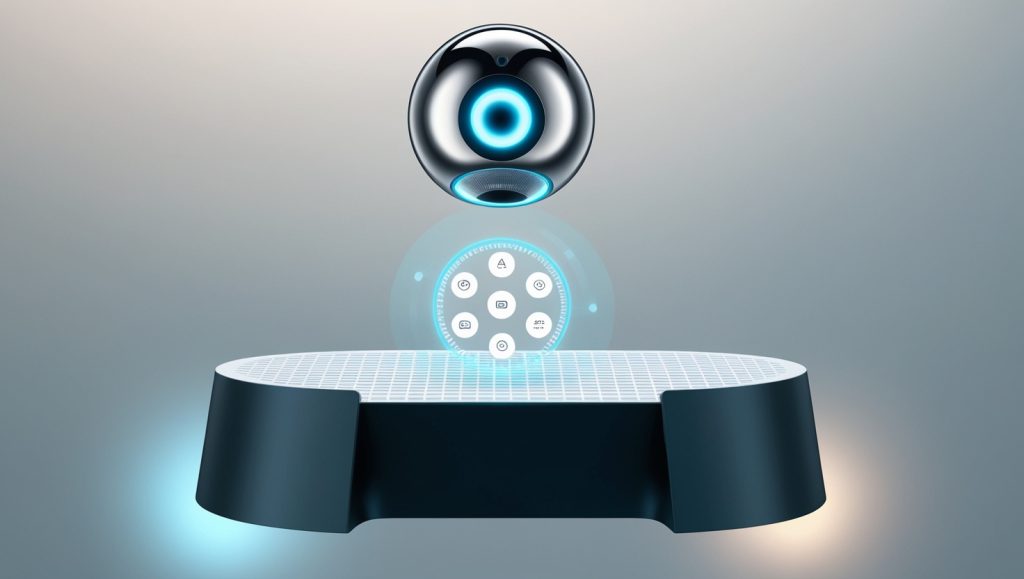Artificial intelligence (AI) is now an integral part of daily life, reshaping how we complete tasks and improving both convenience and productivity. AI-powered personal assistants, once limited to simple commands, are now sophisticated tools integrated across various devices, adapting to our needs in real time and enhancing our routines at home, work, and on the go. Their seamless incorporation into everyday life signals an exciting shift in technology, where AI becomes not only a tool but also a companion to our activities.

The Evolution of AI-Powered Assistants
AI-powered personal assistants have come a long way since their inception. Early iterations, such as Apple’s Siri and Microsoft’s Cortana, provided basic functionality by executing commands and responding to questions. However, with advancements in natural language processing (NLP) and machine learning, today’s AI assistants—like Google Assistant, Amazon Alexa, and Apple Siri—are far more capable. They initiate interactions, anticipate needs, and remember user preferences, creating a more personalized and efficient experience.
Key Milestones in AI Assistant Development
Several key innovations mark the journey of AI-powered personal assistants. Siri’s debut in 2011 made voice-activated AI accessible to the masses, while Amazon’s Alexa in 2014 expanded the concept into home automation, enabling users to control smart devices. In 2016, Google Assistant took things a step further with contextual awareness, allowing for a more fluid, conversation-like interaction that could handle multi-step tasks. Each of these developments has transformed AI assistants from command-following tools to proactive aids in daily life.
Core Features of AI-Powered Personal Assistants
1. Natural Language Processing (NLP)
NLP technology enables AI assistants to understand and respond to human language naturally, handling various accents and colloquial speech with ease. This advancement allows for more natural interaction, so users don’t have to simplify their language or repeat themselves. NLP bridges the gap between human and digital communication, making interactions smoother and more intuitive.
2. Personalization and Adaptability
Using machine learning, AI assistants can tailor their responses based on individual user data. Over time, they learn from previous interactions, becoming more adept at offering personalized suggestions, reminders, and recommendations. For example, an assistant might automatically provide traffic updates during a user’s regular commute or suggest content based on past preferences, making interactions feel more custom and engaging.
3. Multitasking and Context Awareness
Today’s AI assistants are equipped to handle multiple tasks and retain context within a conversation. Contextual awareness allows for ongoing conversations without requiring users to rephrase requests. This is particularly beneficial for tasks like asking for a restaurant recommendation and following up with additional questions about specific menu items or services, creating a seamless user experience.
Applications and Uses Across Different Sectors
1. General-Purpose Personal Assistants
Most users are familiar with general-purpose assistants like Siri, Alexa, and Google Assistant, which handle everyday tasks such as controlling smart home devices, setting reminders, and managing schedules. These assistants simplify life by offering hands-free, voice-activated assistance, helping users stay organized and productive.
2. Enterprise and Business Assistants
For business environments, specialized assistants like Microsoft Cortana and IBM Watson Assistant help streamline workflows by handling scheduling, managing documentation, and enhancing customer service operations. In workplaces, these assistants improve productivity by managing routine tasks, allowing employees to focus on strategic and creative work.
3. Sector-Specific Assistants
In healthcare, AI-powered assistants are used to manage patient appointments and monitor health data, improving efficiency and access to care. Retailers deploy these assistants for personalized recommendations and customer support, while educational institutions use them to create adaptive learning experiences tailored to individual student needs. Each sector benefits uniquely from AI-powered assistants, leveraging their capabilities to enhance service delivery.
Benefits of AI-Powered Assistants
1. Enhanced Productivity and Convenience
AI assistants relieve users from repetitive, routine tasks, enabling them to concentrate on more complex or creative activities. By efficiently handling scheduling, reminders, and basic research, they increase productivity in both personal and professional settings.
2. Personalized Experiences
One of the primary benefits of AI-powered assistants is their ability to offer highly personalized user experiences. By learning user preferences, they provide suggestions and responses tailored to each individual, fostering a sense of familiarity and making interactions more satisfying.
3. Increased Accessibility
AI assistants offer significant accessibility improvements, especially for individuals with disabilities, by providing hands-free control over various devices and services. Voice-activated commands reduce the need for physical interaction, allowing users to perform tasks more independently and efficiently.
Challenges and Ethical Concerns
Despite their advantages, AI-powered personal assistants pose several challenges and ethical issues. Privacy and data security are major concerns, as these tools collect substantial personal data to tailor responses. Moreover, AI biases present potential problems, as assistants may inadvertently favor certain demographics based on training data. There’s also the risk of dependency, with users increasingly relying on AI for even simple tasks, which may impact critical thinking and problem-solving skills. Addressing these issues is essential for ensuring responsible AI development and protecting user rights.
The Future of AI Assistants
The future of AI-powered personal assistants is closely linked to advancements in the Internet of Things (IoT) and smart home technology. As more devices become IoT-enabled, AI assistants will manage multiple devices seamlessly, allowing users to control their entire environment with simple commands. Future assistants could automatically adjust lighting, control appliances, and even monitor home security, providing a highly interconnected and efficient ecosystem.
1. Emotional Intelligence and Generative AI
In addition to IoT integration, AI assistants are expected to develop more human-like interaction capabilities. With emotional intelligence, they will respond empathetically, considering users’ tone, word choice, and even facial expressions. Generative AI will allow assistants to provide dynamic, context-specific responses, making interactions less robotic and more engaging. These advancements will extend AI assistants’ usefulness, as they take on more nuanced tasks and provide a deeper sense of support.
2. AI as Digital Companions
The future may see AI assistants evolve from tools to companions, blending digital and human interactions seamlessly. By providing emotional support, engaging in more meaningful conversations, and anticipating user needs, these assistants could transform how we perceive digital assistance. This development underscores the potential for AI to play a central role in our personal and professional lives, creating an integrated, human-like presence that enhances daily routines.
Conclusion
AI-powered personal assistants are reshaping the digital landscape, providing benefits that extend far beyond convenience and efficiency. As these tools become more advanced and personalized, they promise to deepen our connection to technology, blending seamlessly into our lives. However, to maximize the advantages of AI while minimizing risks, it’s crucial to address privacy, security, and ethical issues. The future of AI-powered personal assistants looks promising, with endless possibilities for personal and professional applications that could redefine how we interact with technology.
